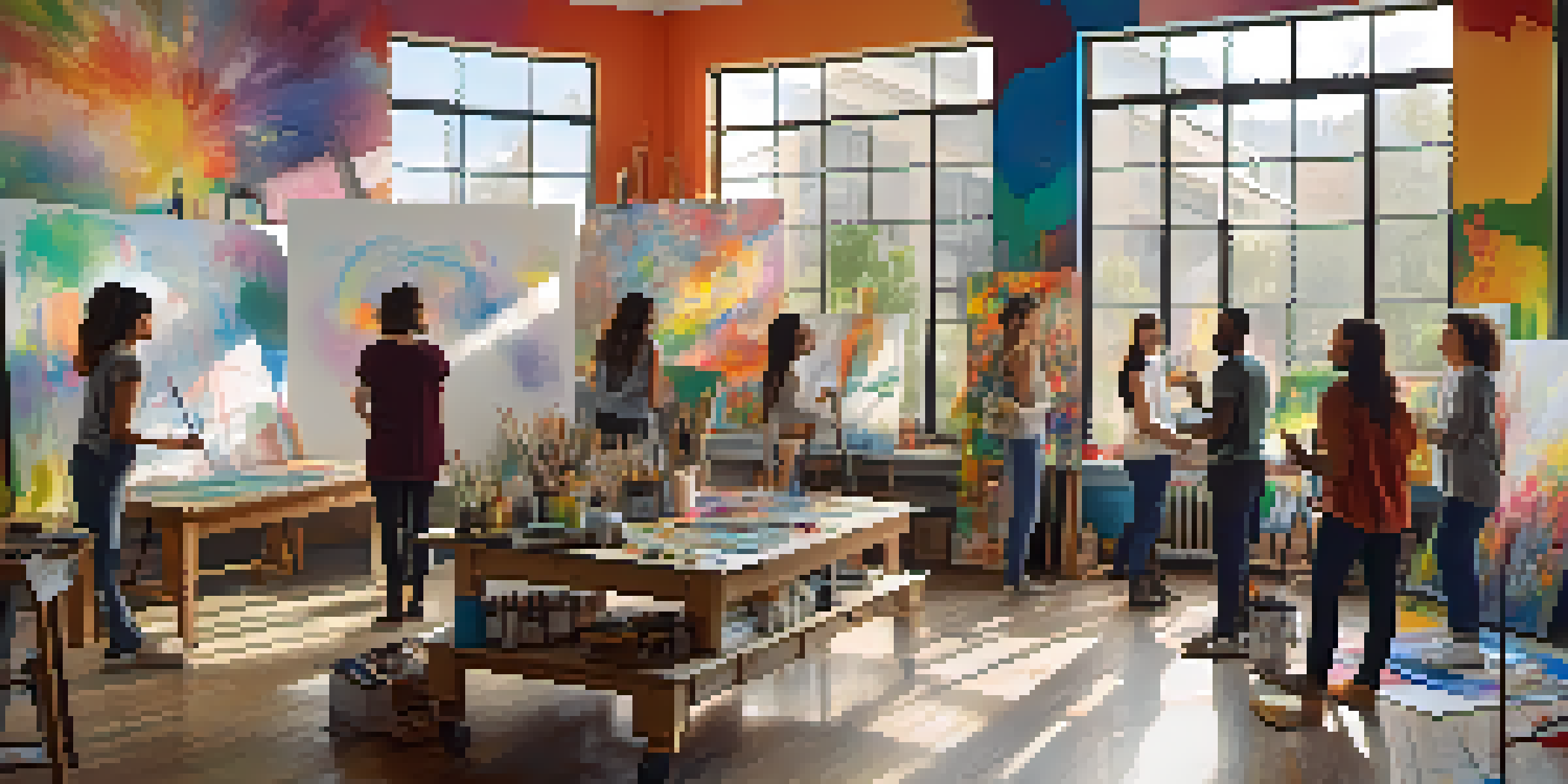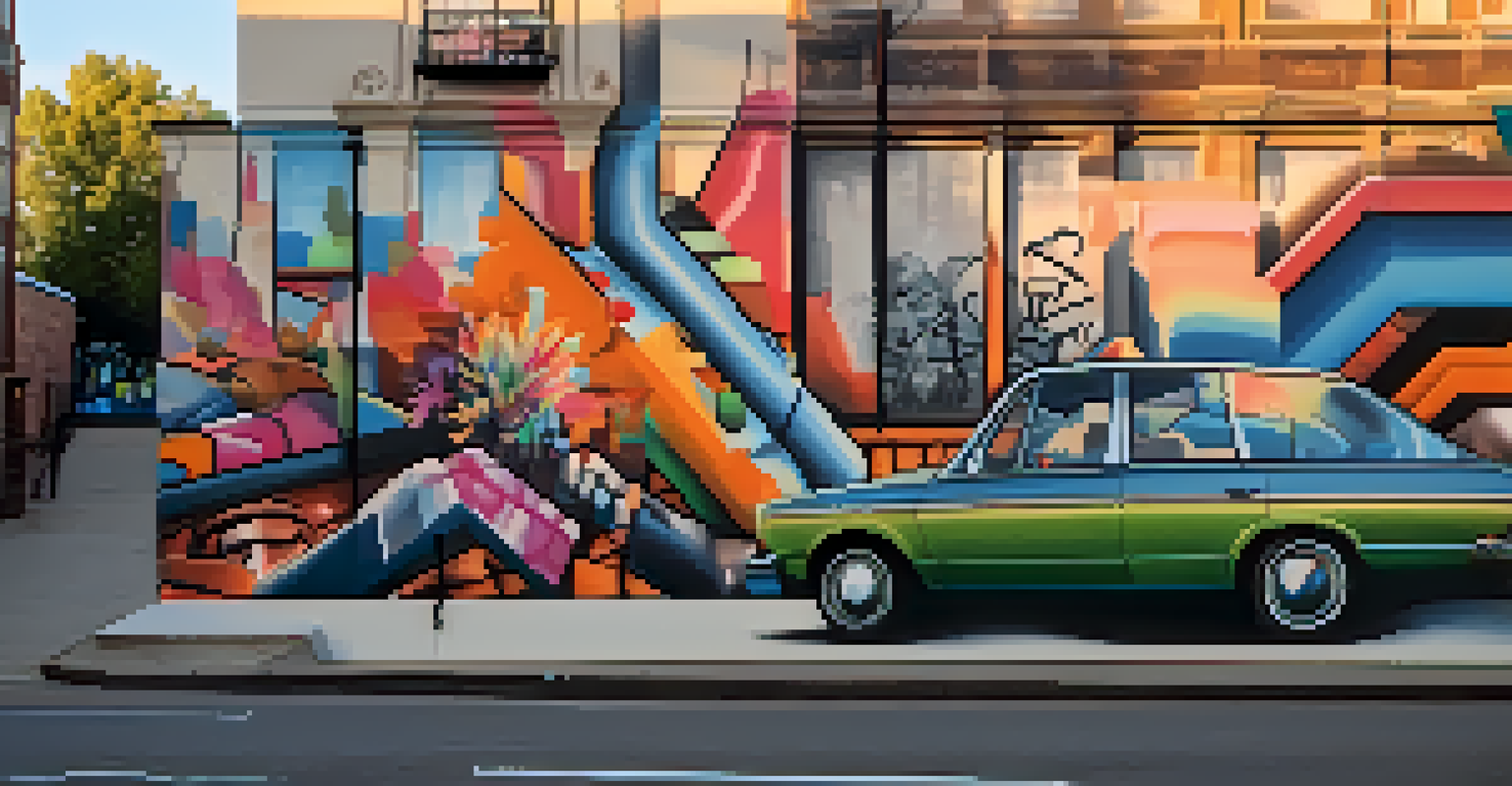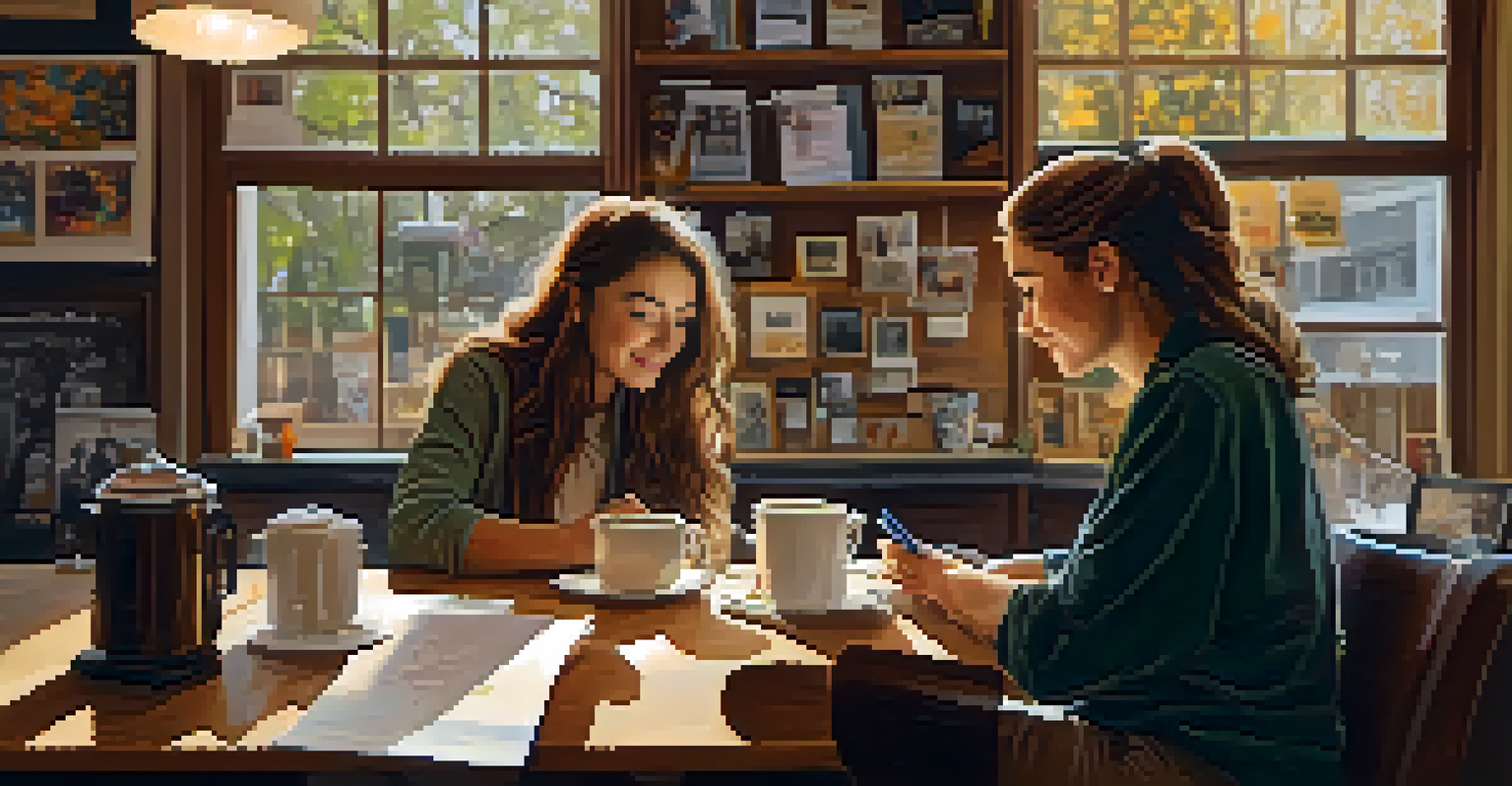The Impact of Collaboration on an Artist's Career Growth

Understanding the Role of Collaboration in Art
Collaboration in art is more than just working with others; it's about combining unique perspectives and skills. When artists collaborate, they share ideas and techniques, creating a richer tapestry of creativity. This synergy can lead to innovative works that neither artist could achieve alone.
Alone we can do so little; together we can do so much.
Think of collaboration like a potluck dinner where everyone brings their favorite dish. Just as a variety of flavors creates a memorable meal, diverse artistic influences can result in extraordinary artwork. Each artist contributes their essence, enriching the final product.
Furthermore, collaboration often fosters a sense of community among artists, which can be incredibly motivating. The encouragement from fellow creators can inspire artists to push their boundaries and explore new styles or mediums.
Expanding Reach Through Collaborative Projects
One of the most significant benefits of collaboration is the ability to reach a wider audience. When two or more artists collaborate, they combine their followers, allowing each artist to share their work with new potential fans. This exposure can be a game changer for emerging artists.

For example, consider a musician teaming up with a visual artist for a live performance. The musician attracts their listeners while the visual artist draws in their audience, creating a vibrant atmosphere. This cross-pollination can lead to increased visibility and new opportunities for both artists.
Collaboration Enhances Creativity
Working together allows artists to merge unique perspectives and skills, leading to innovative and extraordinary artwork.
In the digital age, social media amplifies this effect. Collaborative projects often generate buzz online, leading to shares, likes, and discussions that can skyrocket an artist's visibility across various platforms.
Skill Development Through Collaboration
Working with other artists can be an incredible learning experience. Each collaborator brings their own set of skills and knowledge, which can inspire and teach one another. Whether it's mastering a new technique or understanding a different artistic perspective, collaboration encourages growth.
Creativity is thinking up new things. Innovation is doing new things.
Imagine a painter teaming up with a sculptor. The painter might gain insights into three-dimensional thinking, while the sculptor could develop a better understanding of color theory. This exchange of skills not only enhances their individual artistry but also enriches their collaborative work.
Moreover, collaborating often requires problem-solving and adaptability. Artists learn to navigate differing opinions and styles, which can lead to improved communication skills and a more versatile approach to their craft.
Creating Unique Art Through Diverse Perspectives
Collaboration often results in unique art pieces that reflect a blend of different influences and styles. When artists from varied backgrounds come together, the outcome can be something truly extraordinary. This fusion of ideas can challenge conventional norms and create groundbreaking work.
For instance, a street artist collaborating with a classical painter might produce a mural that marries graffiti with traditional techniques. This unexpected combination not only captures the eyes of onlookers but also tells a compelling story of artistic dialogue.
Wider Audience Through Partnerships
Collaborative projects enable artists to reach new audiences by combining their followers and generating buzz online.
Such innovative collaborations can also resonate with audiences on multiple levels, appealing to fans of both styles. This inclusive approach fosters a broader appreciation of art and encourages discussions that can further elevate both artists' careers.
Building a Support Network Through Collaboration
Collaboration helps artists form valuable connections and build a support network. Working closely with fellow creators fosters relationships that can lead to future opportunities, be it exhibitions, performances, or joint ventures. This network becomes a vital resource throughout an artist's career.
Consider a group of artists who collaborate on a community project. Not only do they create something meaningful, but they also forge friendships and professional bonds that can open doors in the future. These connections can provide emotional and logistical support during challenging times.
Moreover, a strong network often leads to referrals for gigs or collaborative opportunities. Artists who collaborate frequently may find themselves recommended for projects based solely on their collaborative history, enhancing their career prospects.
The Emotional Benefits of Collaborating with Others
Collaboration can have profound emotional benefits for artists. The creative process can be isolating, and working with others helps combat feelings of loneliness and self-doubt. Collaboration offers a sense of camaraderie that can uplift an artist's spirit.
For many artists, sharing ideas and feedback with peers can be incredibly validating. This support not only boosts confidence but also encourages artists to take creative risks they might otherwise avoid. The shared excitement of new projects can ignite passion and motivation.
Support Networks Foster Growth
Building relationships through collaboration provides emotional support, valuable connections, and future opportunities in an artist's career.
In essence, collaboration nurtures a healthy creative environment where artists feel encouraged to express themselves freely. The emotional bonds formed through this process can lead to lasting friendships and a more fulfilling artistic journey.
Navigating Challenges in Collaborative Art Projects
While collaboration has many benefits, it can also present challenges that artists must navigate. Differences in vision, style, and work ethic can sometimes lead to conflicts. Understanding how to address these challenges is crucial for a successful collaboration.
For example, clear communication is key. Establishing mutual expectations and being open to feedback can help mitigate misunderstandings. Artists should approach conflicts as opportunities for growth rather than obstacles.

Moreover, it's essential to remain flexible. The best collaborations often require compromise and adaptability. By embracing the unique contributions of each artist while finding common ground, collaboration can flourish despite potential hurdles.
Conclusion: Embracing the Collaborative Spirit
In conclusion, collaboration is a powerful tool for artists looking to expand their career horizons. The benefits—ranging from skill enhancement to emotional support—are numerous and impactful. By embracing collaboration, artists not only enrich their own work but also contribute to a vibrant artistic community.
As the art world continues to evolve, the ability to collaborate effectively will only become more important. Artists who seek out partnerships and creative dialogues will likely find themselves at the forefront of innovation.
Ultimately, collaboration is about connection—connecting with others, sharing experiences, and creating something greater than the sum of its parts. By fostering this collaborative spirit, artists can unlock new levels of creativity and success in their careers.